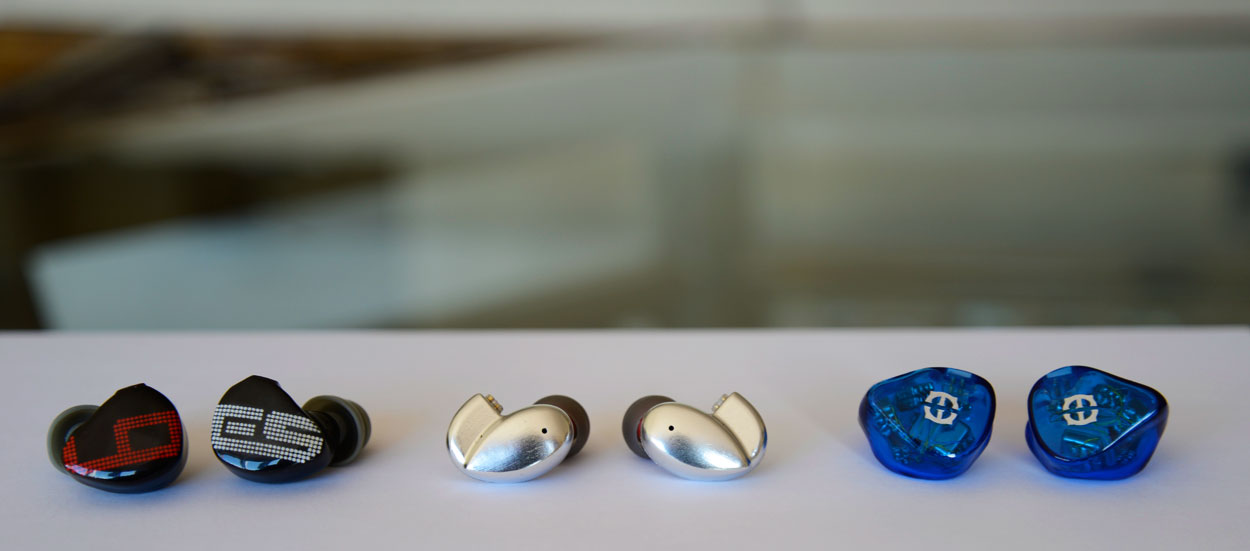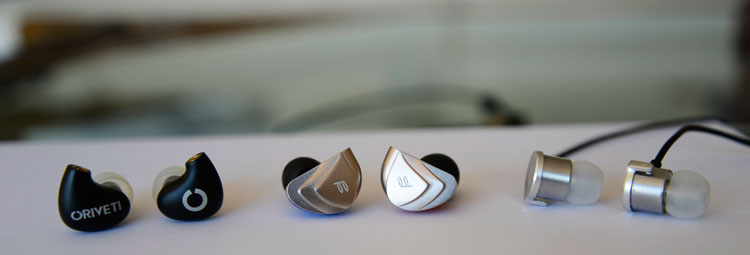The Verdict. Bridging the gap: a technical breakdown
Signature
The good
The most important aspect, which will ultimately determine the lion’s share of appreciation for an iem. Each iem has a signature that will determine its applicability for certain music; but this counts for both the consumer iems as the flagships. As such each and every one can be a hit or miss, depending on the type of music you listen to. The DN2Kj sounds excellent for acoustics and strings as does the Galaxy, the A83 favors female vocals, the S-EM9 in turn up-tempo music. Zeus and Primacy perform best with good ‘ol rock and roll or vocals. Each iem sounds a bit better or worse depending on the music, but when used properly, sound more than fine.
The bad
On the other hand while I consider most, nearly all iems to be specialists, trying to get the most out of the 3 drivers and a simple crossover results in large peaks, which can limit their versatility. A peak automatically implies a dip before and behind it, which affects the frequency presentation and overall tonality. In addition, the tested consumer iems all apply a mid treble peak to boost overall clarity and detail retrieval. The downside: more prone to sibilance, as well as thin sounding treble.
Resolution
The good
All iems had a more than acceptable resolution, with good instrument definition and separation. Tones didn’t sound blurry, and could clearly be distinguished from one another. The DN2Kj is even a positive exception, with excellent resolution than can rival most high end iems. While the TOTL’s perform at a higher level, the consumer iems don’t automatically leave me wanting more. Their sound is fine – but there are moments that hearing sheer excellence from a high end monitor leaves you struck in awe.
The bad
A common trick to improve resolution is by placing instruments further back on the stage. By making the size of instruments relatively smaller, their overall resolution increases, just like making a picture on your computer with a low resolution bigger or smaller will have the same effect. The consequence is that while resolution improves, instrument sizes appear smaller and their stage positioning is less natural. However in all fairness, this is not just the case for lower tier iems. While it happens to be true for the A83 and DN-2000j, it’s less so for the Primacy – similarly, the instrument positioning of the Galaxy is also quite laidback.
Soundstage
The good
The easiest discernible feat of a soundstage is its width, and the most prominent in determining overall size. All three consumer iems have good soundstage widths that hover around average. There’s ample room for separation, and the imaging is quite good: individual instruments can be precisely located in distinct locations in space, and don’t tend towards congestion.
The bad
Soundstage width is the most apparent feature that determines stage dimensions. But adding depth and height increases the overall space, as well as layering: the relative positioning of instruments behind each other. 3D sound creates a more realistic stage; the drummer should be positioned behind the bass player and vocals, with the guitars to the side and maybe a keyboard player or violins in the background. Which brings us to the second point – stage coherency, or the feeling that instruments are playing together on a stage. It’s here the consumer iems lack that extra bit of realism. The imaging is generally good, except when it comes to their position in depth – the layering.
Final Thoughts
Usually an upgrade results in technical improvement according to a certain price difference; yet a different signature (for example when switching from a lower to higher tier iem or dap). Sure, when you pit two iems with almost the same signature against each other, the more expensive one should display a technical advantage over the cheaper one, making it obsolete. But as is often the case when it comes to audiophile equipment, there’s very rarely a case of an upgrade being the same, but better.
Signature
Signature will always remain one of the – if not the most – important features of an iem. You can usually tell within minutes whether you’ll like an iem or not. The genres you listen to will automatically bias your opinion towards a signature, and play a large role in determining preferences for certain iems. This holds for iems on every level and is really one of the key messages to this review when it comes down to it. An iem’s signature will make it more or less appropriate for certain music, regardless of its technical capability. When played with the right music every iem can shine, and it doesn’t have to feel self-conscious when pitted against an expensive with a very different signature.
For instance, the DN-2000j performs great for classical music, and I’d pick it over the S-EM9 and Zeus for listening to a string symphony. It’s treble oriented signature, high resolution and thinner notes sound clear and sparkly and have the right tonality for strings like violins. It has an additional feature of performing exceptionally well at a lower volume, and will present a wide range of sound and detail even compared to some of the best. A functional advantage beyond the actual music, for listening while working or reading. The A83, in turn, seems made for female vocals, with a prominent upper midrange peak that accentuates emotional articulation. The Primacy’s midrange bump and warm atmosphere give it a smooth ambiance for male vocals or singer/songwriter type music, and I’d pick either over a treble-oriented iem, regardless of price, for a warm, deep and enveloping sound.
On the other, going up the ladder increases realism, smoothness and resolution: the ability to present detail from a resolving nature, rather than artificial treble peaks. Simply put, a more refined and linear sound. Often people expect that an increase in price and value comes with a wider stage – we all love a wide soundstage. This is not really the case, at least not dramatically so. In fact, neither the S-EM9, Galaxy or Zeus have particularly wide stages. But instead, sound is presented in a three dimensional plane, rather than a flat screen. Each tone has its own position along the axis of the stage, and the coherency contributes to a more realistic presentation.
Complementing
Nonetheless, each of these iems show that regardless of price, any iem can still complement a collection. What’s more, each of them might equally not be to one’s liking. Even though there are differences in technical ability, the differences do not trump general preference. These iems have each shown that good sound can be offered at an affordable price – and as good as that sound is, further refinement can equally be achieved. Smoothness, resolution and soundstage precision and realism: a top of the line sound. But it comes at an incredible cost.






